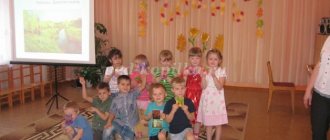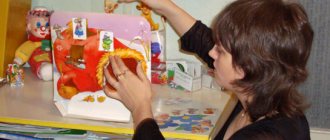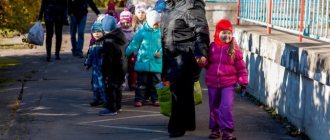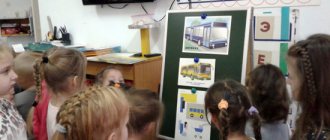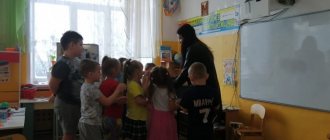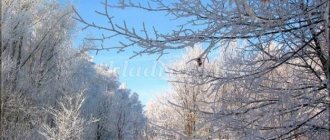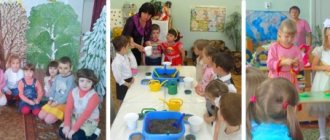The importance of music classes in the senior group of preschool educational institutions
Music classes are conducted throughout all years of preschool education. Music is an extraordinary means that teaches us to perceive the world around us through sound aesthetics and emotionally-filled works. The classes provided give children joy, a positive charge of energy, a good mood, and develop a sense of rhythm and melody.
Scientifically proven fact. Music lessons contribute to the development of a child’s intellectual abilities.
In the older group, children need to be actively introduced to various musical instruments and taught the basics of playing them. Musical activities of a rhythmic nature, such as rhythm, movements to music, and various musical performances, are also welcome. It is necessary to show preschoolers how to perceive the world through musical means.
Music lessons develop aesthetic taste and intellectual abilities
The goals of music classes in the senior group may be the following:
- developing the creative abilities of preschoolers with the help of music;
- increasing interest in music;
- development of musical ear, rhythm, plasticity;
- education of a harmoniously developed personality.
The tasks vary depending on the type of activity, but the main ones can be identified:
- developing interest in musical activities;
- development of abilities and skills in a certain area (vocals, playing a musical instrument, rhythm);
- formation of musical culture.
Techniques relevant for the older group
- Gaming techniques. Introduction to the art of music through play creates optimal conditions for instilling a love of beauty and developing the creative abilities of students. unexpected appearance of toys,
- improvisation games,
- educational games,
- creating a game situation.
Since play is the leading activity in preschool age, gaming techniques will be relevant for pupils of all groups of preschool educational institutions.
Types of music classes
Music classes vary in content. It could be:
- A typical music lesson is a traditional music lesson that includes performing, listening and mastering a piece of music. The structure of this type of lesson can be different. For example, you can start by listening to some famous piece or, conversely, first the children sing a learned song in chorus.
- A dominant music lesson is a type of lesson whose emphasis is on something specific. For example, learning a musical instrument, mastering rhythmic techniques, developing hearing, etc.
- An integrated music activity is characterized by the use of various activities together with music. For example, a combination of music and artistic creativity (drawing, modeling, dance, theater activities), music and reading a literary work, music and architecture, music and sports. This kind of classes is more complex in its structure, so it is recommended to start introducing them from the middle group of preschool educational institutions. They are held no more than once a month.
- A thematic lesson highlights a specific topic that unites all types of children’s musical activities, on the study of which the entire course of the lesson is based. For example, the theme “Seasons” or “Fairy Tales in Music”, etc.
In the older group, children actively learn to play musical instruments
Depending on the number of students participating in the lesson, there are:
- individual sessions;
- music lessons in subgroups;
- group music lessons.
Summary of the thematic music lesson “Winter's Tale” in the senior group of kindergarten
Thematic music lesson in a preschool educational institution on the theme “Winter's Tale”.
Senior group Goal: Development of children's musical and creative abilities, strengthening the health of preschoolers, using health-saving technologies in various types of musical activities. Objectives: Educational objectives:
- continue to teach how to move in accordance with the nature of the music;
- encourage singing cheerfully, lively, distinguish between musical introduction and bridge; - recognize a familiar piece, determine the character, expressiveness of music Developmental tasks:
- develop vocal and singing skills, sense of rhythm, fine motor skills, speech skills, coordination of movements, auditory attention, rhythmic hearing, creative manifestations and abilities;
- promote the development of musical memory and imagination. Educational tasks:
- to cultivate emotional responsiveness to music and aesthetic feelings;
to form emotional and joyful feelings from active participation in music-making, interest and love for music; develop the ability to interact with partners. Materials: Music center, audio recording, snowflakes, “Funny Snowmen” cards.
Course of the lesson
1. Organizational moment Children enter the music room to the music. Musical director: A new day has come. I will smile at you, and you will smile at each other. Think how good it is that we are all here together today. Let's wish everyone "Good morning"!!! Musical director: I'm very glad to see you! Outside the window lies white, fluffy snow, frost stings your cheeks. And in our kindergarten it is warm and cozy. I'm in a great mood! I really want to share it with you. Valeological song - chant “Hello!” On this wonderful day, (one hand on the belt, then the other)
Good afternoon
(clap hands and knees)
Say hello to each other
(one hand on the belt, then the other)
We are not lazy
(tap feet)
Extend your arms
(one hand forward, then another)
Don’t yawn
(arms outstretched, shake your head left and right)
A cheerful song
(hands folded in front of you, shake)
Sing
(clap)
And now we continue to sing with acceleration
(Sing again)
.
2. Problem situation Children find a SNOWFLAKE - LETTER Musical director: Oh, what is this? What a big, beautiful snowflake! But this is not a simple snowflake - this is a letter! Let's read it. (SLIDE)
Dear guys!
Zimushka is writing to you - Winter. It’s my time in the yard, I covered everything with snow. I'm waiting for you to visit, kids, to the kingdom of snow, to the kingdom of ice. Musical director: Do you want to get into a winter fairy tale? Look, Snowmen are also rushing into a fairy tale. The snow men walk so fast that they are afraid to even melt. Hot, they stop and freeze in the cold, cooling down. Let's go with them. A game for attention and development of the sense of ri Children, depending on the nature of the music, march, move by jumping or stomping. When the music stops, take a pose in accordance with the diagram shown by the teacher. Let's go to the fairy tale quietly, so as not to scare it away. One, two, three - fly! Breathing exercise “Snowflakes” Musical director: As Santa Claus blew, the icy stars flew and swirled in the frosty air. Children take snowflakes on strings and blow on them, watching the snowflakes swirl while the music director reads a poem. Snowflakes are spinning in the frosty air. Lacy stars fall to the ground. Here one fell on my palm. Oh, don't worry, snowflake, wait a little. Perform exercises to correct vision. We saw a snowflake We played with the snowflake The snowflakes flew to the right, The children looked to the right. Now the snowflakes are flying. The eyes looked to the left. The wind lifted the snow up and dropped it to the ground... The children look up and down. That's it! They lay down on the ground. Musical director: Here we are in a winter wonderland. Magic reigns here, and a miracle can happen at any moment! But for it to happen, you need to close your eyes tightly. Children open their eyes. Slides with a winter landscape appear on the screen. Musical director: Let's admire the beauty of the winter forest. The forest is enchanted by the enchantress in winter. And under the snowy fringe, motionless, mute, it glitters with a wonderful life. (F. Tyutchev)
The trees stand in the snow, the birds are not heard, all nature is asleep.
Musical director: It’s getting cold in the magical forest. Brrrrr. The exercise is carried out according to the method of V. Emelyanov. Blizzards whistled (children perform glissando on the sound “u” from top to bottom)
Snow flew
(children perform glissando on the sound “o”)
A big blizzard made the beds
(glissando on the sound “i”)
She made the beds with frost
( abruptly pronounces the sound “a” in a high register)
And there were snowstorms all night, making it difficult to sleep
(they strengthen the sound “u”, spreading their arms, become quiet, joining their hands in front of them)
Guys, do you want to meet the owner of this beautiful winter forest?
So let's call her, let's sing a song about her. Musical director: We will sing gently, tenderly, quietly, listen to each other and the music. Song “What a Winter” (words and music by T.A. Elport) (SLIDE)
Your song turned out wonderful.
And now we sit down quietly, because the fairy tale continues: Winter comes with affection and with its fairy tale. If he waves his magic wand, the Winter Fairy will come. Musical director: Many composers have sung the beauty and magic of a snow-white, fluffy winter. Listen and the music will take you far, far away. We will fly over a snowy forest, you will hear the conversation of snowflakes with the wind, the crunch of snow on your feet. Video presentation “Seasons” Winter. “Waltz” from musical illustrations to A. Pushkin’s story “Blizzard” (music by G. Sviridov) Music director: Guys, let’s try to find beautiful words to describe the winter forest. Game “Magic Snowflake ” The purpose of this game is to
activate the vocabulary, develop skills for children to actively use all parts of speech.
Children, passing a snowflake, come up with words about a winter park, based on the mood of the music they listened to. (The forest is fabulous, crystal, ringing, magical... silver, blue, fluffy, charming, cold, snow-white, frosty, mysterious) Musical director: Guys, well done. How many beautiful winter words do you know? Did you like the music? — Tell me, what is the character of the music? (Children take turns saying - quiet, gentle, calm, affectionate, fairy-tale, magical, snowy) Musical director: Children, for some reason my hands are not warming up from the winter cold. Let's warm them up. Let's do a massage now. Children stand one after another like a train. A chill runs down your back - (tapping fingers on each other's back)
Ok-ok-ok.
(knocking with palms on the back from top to bottom)
The winter breeze is blowing -
(stroking with palms)
Ok-ok-ok.
(knock with palms)
I’ll give you a massage -
(rubbed with the ribs of the palms)
Ash-ash-ash.
(knock with palms)
I’ll warm you, you’re our friend -
(knock with fists)
Ash-ash-ash.
(knock their palms) Musical director: Are you warmed up, my kids? Well done! Whoever doesn’t sit in the cold will never freeze! Oh, listen, what's that noise? It’s in the neighboring clearing that hares and squirrels are playing “Burners” and escaping the frost! We'll play too, but first we'll count! Reading: Oblique, oblique, don’t go barefoot, but go with shoes on, wrap up your little paws. If you wear shoes, the wolves will not find the hare. The bear won’t find you, come out, you’ll “burn”! Game “Burn, Burn, Clear” Musical director: Our musical lesson has come to an end. We were one whole, friendly, united team. And before we say goodbye to each other and our guests, I invite everyone to remember and share with us what was most remembered and liked in today’s lesson, you will pass this treble clef in turn to each other and share your impressions. Children pass the “treble clef” and say what they remembered and liked during the lesson. Musical director: And now, guys, let's say goodbye to all the guests. Our journey is over, but the winter fairy tale does not end. She is always near us: in the melodies of a winter blizzard, in the sparkle of snow, and in the patterns on glass. Come up with your own winter tales, draw them at home, and then we will tell them to each other... The children leave the hall to the music.
We recommend watching:
Notes of educational activities for the senior group on the topic: Autumn Notes of educational activities in the senior group “Journey to the magical world of musical instruments” Notes of educational activities in the senior group “On a visit to Domisolka” Notes of a mathematics lesson in the senior group on the topic: Winter
Similar articles:
Conversation in the senior group of kindergarten on the topic: How people use leather and wood
Lesson notes for the senior group of kindergarten
Synopsis of a musical educational lesson in kindergarten in the senior group. Music is the treasure of heaven
Summary of a music lesson in kindergarten in the senior group for Bird Arrival Day - March 22
Summary of a music lesson in kindergarten for older children on the topic “Peace through sports”
How to conduct a music lesson in a senior group
To conduct a lesson competently, you need to select suitable topics, outline a plan, and take into account relevance.
Preparation for class
A stereo system, projector, laptop, and various musical instruments can be used as preparatory equipment. Before the main part of the lesson, the motivating part can be done in the form of looking at pictures on a certain topic, reading a fairy tale or poem related to a piece of music, or discussion. For example, in a music lesson on the fairy tale “Teremok”, you can start the lesson by repeating the fairy tale (reading or discussing), and then move on to the main part: voicing the characters of the fairy tale using musical instruments.
Topic index
For the older group, the following topics for classes may be relevant:
- Seasons: “Musical colors of spring”, “Music of autumn”, “Music of spring”, “The Tale of a Snowflake”;
- Music and fairy tales: “Teremok”, “The Miraculous Transformation of Fedora”;
- Introduction to musical instruments and elements of musical literacy: “Merry pipe”, “Get to know the notes”, “In the world of musical instruments”;
- Aimed at cultivating morality: “Good and evil in music”, “Polite words”, “Image of a mother”, “Let’s return the mood to music”;
- Plot: “Fair”, “Trip out of town”, “Music store”, “Merry musicians”;
- Educational: “Music and Sports”, “Travel to India”, “Travel to Africa”, “Travel during the War Years”, “Space”.
You can come up with many different variations of activities on the autumn theme.
Fragment of a summary of a musical lesson based on the fairy tale “Teremok” in the senior group (author Alevtina Glotova)
In the lesson, fairy tale characters will be voiced with musical instruments.
The teacher begins the lesson with a greeting and an introductory word:
- Guys, do you like fairy tales? I also really love fairy tales.
- What fairy tales do you know? (Children's answers).
- Listen to the riddle and guess what kind of fairy tale it is? The fox found a home for herself, the mouse was kind, and in that house, in the end, there were many tenants.
- What fairy tale is this riddle talking about? That's right, this is the Russian folk tale "Teremok". And today I invite you to voice this tale with musical instruments.
Next, all the characters in the fairy tale are analyzed and a suitable musical instrument is selected for each:
- Little mouse, what musical instrument can we use to represent a mouse? Of course, with a rattle - sprinkles;
- Frog-wah - with musical hammers;
- Runaway bunny - with wooden spoons;
- Little fox-sister - metallophone;
- Wolf - gray tail - rattles, tambourines;
- Bear - drum.
Next, the roles are distributed among the children and musical instruments are distributed. The teacher begins to read the fairy tale, and the children voice the characters with musical instruments when they appear.
- There is a teremok in the field - a teremok, It is not low, not high, not high. Like a mouse running across a field, a field, stopped at the door, ringing the bell.
- The mouse rings the bell, but the door to the little house does not open. The teacher draws the children's attention to the fact that the tower has a note that says that the tower is magical.
- Guys, the tower is not simple, but magical. To enter it, you need to complete a task. Look, here are the cards with diagrams on them. We told you that a mouse can be represented by rattles - sprinkles. The mouse must find its diagram and play what is written there.
- Well done, mouse, why did you choose this scheme? Of course, there is a rattle on it.
- The mouse plays according to the scheme, the door to the little house opens.
- Well done Mouse, you completed the task, go into the little house.
The mouse and the frog are voiced. Next comes a physical training session:
- Like our neighbor (the children turn to each other and bow), the conversation was fun. Ghouls in the gusli (squat, pretend to play the gusli), Ducks in the pipes (stand up, bend back, turn from side to side), Sheep in the Donets (clap their hands, pretend to play the tambourine), Cockroaches in the drums (march, pretend to play on the drum). They play very happily and make each other laugh.
- Well done! Meanwhile, the fairy tale continues.
Further in the text of the tale the fox, wolf and bear are voiced.
Preschoolers will be interested in voicing characters from an already familiar fairy tale.
After finishing reading, the teacher says:
- Was it an interesting fairy tale? Of course, interesting, what new did you learn today?
- All fairy tale heroes can be depicted with musical instruments. I want to give you a treble clef so that music will always sound for you. Now let’s say goodbye and head back to the group.
Quote from: https://www.maam.ru/detskijsad/zanjatie-po-muzykalnomu-vospitaniyu-po-skazke-teremok-ozvuchivanie-personazhei-skazki-muzykalnymi-instrumentami-dlja-5–6-let.html
Video: musical fairy tale “Teremok” in kindergarten
Table: notes of music classes conducted in the senior group of preschool educational institutions
| Author and title of the abstract | Description of material |
| “The Magic Umbrella”, E.N. Kozlova | Scenario for autumn entertainment in the senior group. Autumn comes to the children for the holiday with a magic umbrella that helps create all sorts of miracles. |
| “The Adventures of the Magic Clock”, I.V. Fedorov | New Year's musical party with the participation of fairy tale heroes: Pinocchio, Malvina, Baba Yaga, Koschey the Immortal. |
| “Space”, P. Mazurenko | A musical lesson in a senior group on the theme of space using musical works dedicated to it. |
| “Sounds of spring in nature and music”, E.N. Moreva | In the lesson, using riddles, Russian folk songs, works by M.I. Glinka talks about how nature, the sounds of spring, and birdsong are reflected in music. |
| “Native Land”, N.G. Korshunova | Educational and musical entertainment is aimed at improving children's knowledge about the Urals: its nature, lakes, minerals, and precious stones. |
| “Summer natural phenomena”, N.N. Mironova | The literary and musical lounge is aimed at strengthening children's ideas about summer natural phenomena. |
| "Music Store", M.A. Krasnova | An open lesson deepens children's knowledge about the types of musical instruments and their diversity. |
| “Music Box”, T.L. Soldatova | An open music lesson shapes children's ideas about modes in music, teaches them to listen to musical works and develops creative imagination. |
Video: music lesson in the senior group
Notes of music lessons for the senior group, children 5-6 years old
Goal: development of children's musical and creative abilities in various types of musical activities.
Equipment:
- music Center;
- projector;
- children's musical instruments: metallophone, tambourine, wooden spoons; noise instruments: sticks, balloons, bags.
Musical series: N. Rimsky-Korsakov “Lullaby”, D. Shostakovich “Waltz Joke”, “On the Mountain Kalina” Russian folk melody arranged by Y. Chichkov, “On a Sleigh” by L. Timchenko.
Greetings
The music director hums: “Hello boys!” The boys answer, singing: “Hello!”
The music director hums: “Hello girls!” The girls answer, singing: “Hello!”
Musical director: - Now let’s say hello to the guests! The children turn to the guests and sing: “Hello guests!” The guests answer: - Hello!
Motivation
Musical director:
— Guys, do you like fairy tales? (yes), do you write fairy tales? (children's answers). I have composed a musical fairy tale for you, do you want to become its hero? (Yes).
Acquaintance
Ri
Musical director: (slide with an image of the winter kingdom) - In a certain kingdom, in a certain state, there was a beautiful kindergarten, beautiful and inquisitive children went to the kindergarten. When they first met, they immediately began to get to know each other, but they got to know each other in an unusual, musical way.
Want to know how? (yes) Then sit in a circle (on your knees). What is your name? (Masha). What does your mother affectionately call you? (Mashenka).
The child claps the rhythm with his palms (2 claps - MA-SHA), and the children clap the rhythm with their palms on their knees (3 claps MA-SHEN-KA).
Rhythmic chanting with sticks
Musical director: — And then one day, on a beautiful day, what day was it according to the time of year? (winter). So, on a beautiful winter day, the children went for a walk in the winter forest. What can you use to go into the forest in winter? (children's answers). Let's go sledding and skiing to ride down the hills and hills. Sit on the “sleigh” (chairs), we’ll go, and so that the ride doesn’t get boring, we’ll sing a song.
(slide showing children on sleds and skis)
“One, two, three, four, five, We’re going, we’re going for a walk. (We’ll ride down the snowy hill with you! Oooh-ooh-ooh!”)
Musical director:
— Now let’s get on our skis and take our sticks (sticks under the chairs).
Singing a song with sticks.
Breathing exercise
Musical director:
(slide with an image of a forest clearing)
- Now the children have reached the forest, but how fresh is the air in the forest, what does it smell like? (Christmas trees). The children began to breathe fresh air and enjoy the beauty. And we will take a deep breath of fresh air through our nose, and as we exhale we will happily say “Ah!”
Active perception of music
Improvisation to the music of N. Rimsky-Korsakov “Lullaby” Dance of the winds and snowflakes to the music of D. Shostakovich “Waltz Joke”
Musical director: “So the children inhaled the aroma, inhaled it, and began to look at the forest picture. And what did they see in the clearing? (answers) What mood does the picture convey? And then it seemed to our children that something was missing in the clearing. What would you add that is missing? (answers). How would you and I add brightness to this picture to make the clearing more beautiful and brighter? (children's answers) So the guys from a certain kingdom-state decided to become artists and decorate the clearing. Well, we will decorate it not with paints and pencils, but with hand and body movements accompanied by beautiful music. What would you draw? (sun, snow, clouds...)
Children draw figures to the music of N. Rimsky-Korsakov “Lullaby”, then dance with snowflakes to the music of D. Shostakovich “Waltz Joke”.
Musical director: Do you want to see what happened? (slide with an image of a bright forest clearing) How our clearing has been transformed, you are real wizards!
Voice-over of the poem “On a Sleigh” by L. Timchenko
Musical director:
— While the children were dancing and playing, Zimushka-Winter herself came to them and gave them a beautiful box. Look, what is this? What instruments do you know, what are they made of? Play and listen to how they sound. And so our children came up with a game with instruments and began to play.
We are going, we are going on a sled, we are going, we are going on skis, (claps on the knees, on the floor, on the palms) One, two, three. The snow creaks underfoot, (bags of starch) A woodpecker knocks on a branch, (spoons, sticks) A magpie crackles on a tree. (ratchet)
We are going, we are going on a sled, we are going, we are going on skis, (claps on the knees, on the floor, on the palms) One, two, three. And the snowflakes swirl, fly (metallophone, triangle, bells) and melt on the palm of your hand.
We are going, we are going on a sled, we are going, we are going on skis, (claps on the knees, on the floor, on the palms) One, two, three. A squirrel on a branch is gnawing nuts, (nuts) A horse is pushing a sled in the snow. (tambourine…)
We are going, we are going on a sled, we are going, we are going on skis, (claps on the knees, on the floor, on the palms) One, two, three. Suddenly the wind and blizzard came (tubes) and made noise along the branches. (paper,..)
Orchestra “On Mount Kalina” Russian folk melody arranged by Yu. Chichkov
Musical director: — And suddenly beautiful, playful music began to sound in the forest, the children took their instruments and began to play in the orchestra. Let's try to play in an orchestra, I will be the conductor and show with my hands which group to play.
Children take instruments and play in the orchestra
Musical director: - Do we have a beautiful orchestra? As a farewell, Zimushka-Winter gave the children balloons, but the children were such entertainers that, returning home, they sang a song while playing on balloons.
“One, two, three, four, five, We went for a walk in the forest. Here we are returning home from the forest clearing!
Reflection
Musical director: - Well, guys, did we have an interesting fairy tale? What title will you come up with for our fairy tale? What did you like? Will you come up with your own fairy tale? Who will you tell it to? Will you teach someone to play with balloons at home? What else can you teach me to play? What tools can you make at home?
The music director hums: “Well, now let’s say goodbye to you, musically.”
Goodbye boys! The boys answer, singing: “Goodbye!”
The music director hums: “Goodbye, girls!” The girls answer, singing: “Goodbye!”
The children turn to the guests and sing: “Goodbye, guests!” (Guests answer).
Musical and entertaining leisure time for older preschoolers
Leisure plays an important role in children's lives. Classes of this type are held in a relaxed atmosphere and develop children’s creativity and independence. Parents and children from other groups can be present and participate in the process. Children receive a great boost of energy when they use sports games and competitions that involve active movements.
Musical entertainment can take place in a relaxed atmosphere, or it can involve active forms of activity.
An important point is the preparation of mass musical and entertainment leisure events, during which costumes are prepared, rehearsals are held, dances and songs are learned.
Table: example of a scenario for sports and musical leisure (fragment)
| Author | Ostrogina N., teacher, secondary school No. 1416, structural unit 4 (d/s) |
| Name | "Funny traffic light" |
| Progress of the event | Heroes: presenter, Winnie the Pooh, Piglet.
|
| Quote from: https://www.maam.ru/detskijsad/sportivno-muzykalnyi-dosug-veselyi-svetofor-starshaja-grupa.html | |
Table: example of a scenario for musical-ecological leisure (fragment)
| Author | Milova O., teacher, Lyceum No. 1564, Moscow |
| Name | "Sea, sea, ocean" |
| Progress of the event |
|
| Quote from: https://www.maam.ru/detskijsad/yekologicheskii-dosug-more-more-okean-starshaja-grupa.html | |
Video: musical leisure in the senior group
Long-term planning of music classes in the senior group
Long-term plans are usually drawn up by the music director in kindergarten before the start of the school year. The plan specifies the period, tasks, repertoire used and techniques that will be appropriate in the lesson.
Table: example of long-term planning of music classes in a senior group (fragment)
| Author | Stroganova A.M., music director, MDOU Kindergarten “Ogonyok”, p. Ust-Kachka, Perm region | ||
| Month | Kind of activity | Program content | Repertoire |
| September | Musical and rhythmic movements:
|
|
|
| Perception of musical works. |
|
| |
Singing:
|
|
| |
| Playing musical instruments. | Teach children to perform simple songs on children's musical instruments (rattles, drums). | “Rain” A. Kholminov | |
| October | Musical and rhythmic movements:
|
|
|
| Listening (perception of musical works). |
|
| |
Singing:
|
|
| |
| Playing musical instruments. | Perform short songs on children's musical instruments individually and in small groups. |
| |
| November | Musical and rhythmic movements:
|
|
|
| Listening (perception of musical works). | Perceive the clear rhythm of the march, expressive accents, listen to various dynamic shades. | “March” by S. Prokofiev from the opera “The Love for Three Oranges”. | |
Singing:
|
|
| |
| Playing musical instruments. | Teach children to play in an ensemble clearly, harmoniously, and maintain the overall dynamics. | “Joke” by A. Selivanov. | |
In the older group, children need music lessons. They develop their hearing, accustom them to beauty, and form a musical culture. Musical and entertaining leisure gives children an emotional charge and reveals their creative abilities.
